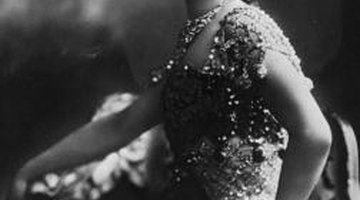With its fluffy meringue base, whipped-cream topping and luscious, fruity crown, the dessert known as pavlova shares its name with the legendary ballerina Anna Pavlova. Several countries claim credit for developing the spectacular-looking dish, which was inspired by the Russian prima ballerina's airy, romantic style.
The Dying Swan
Anna Pavlova was born in St. Petersburg, Russia in 1881. She trained at the Russian Imperial Theatre School and earned the title of prima ballerina in 1906. In 1911, Pavlova formed her own dance company, which traveled around the world and introduced people in remote places to classical ballet. Pavlova is perhaps best known for her dramatic performance of the dying swan in "Swan Lake." At the age of 49, as the dancer lay dying from pleurisy, she reportedly uttered the words, "Prepare my swan costume."
Just Desserts
In 1926, Pavlova performed in Australia and New Zealand, where she captured hearts with her delicate, fragile style. Historians bicker about which country "invented" pavlova, but variations of the dessert appeared in both countries around the time of her visit. In 1929, a New Zealand cookbook -- "Mrs. McKay’s Practical Home Cookery" -- featured a recipe for "Pavlova Cakes" that yielded small, cream-filled meringues. In 1935, Australian chef Herbert Sachse created a fruity meringue dish, about which someone commented, “It is as light as Pavlova." The light dessert certainly honors the dancer; its marshmallow-like consistency is reminiscent of Pavlova's white layered tutu and ethereal on-stage presence.
Related Articles
References
Resources
Writer Bio
Judy Fisk has been writing professionally since 2011, specializing in fitness, recreation, culture and the arts. A certified fitness instructor with decades of dance training, she has taught older adults, teens and kids. She has written educational and fundraising material for several non-profit organizations and her work has appeared in numerous major online publications. Fisk holds a Bachelor of Arts in public and international affairs from Princeton University.











